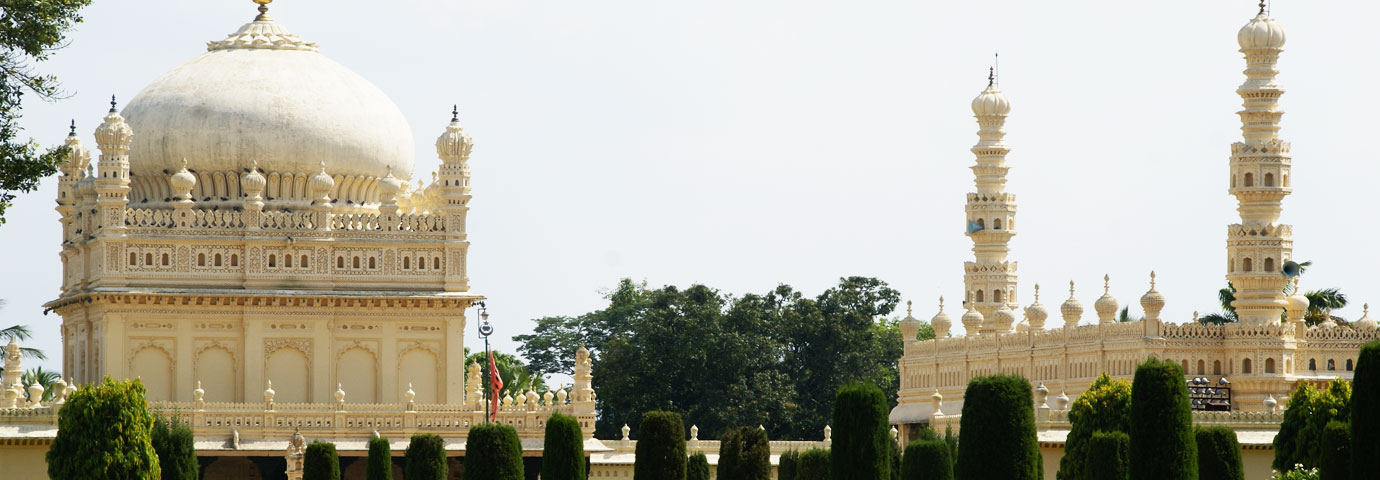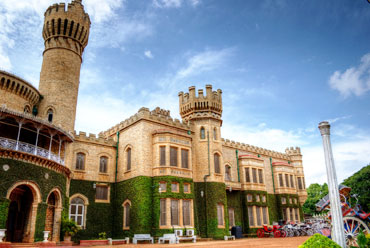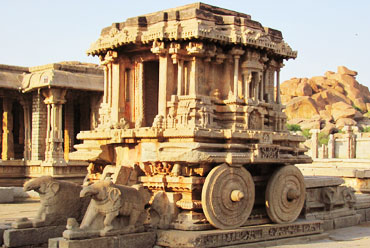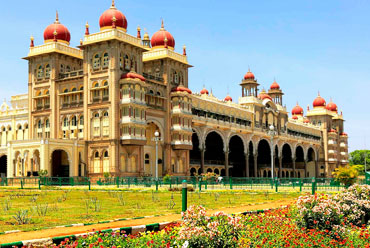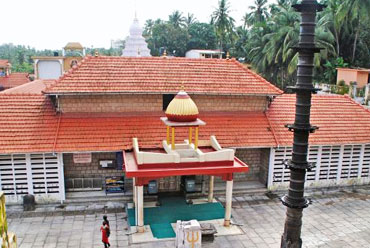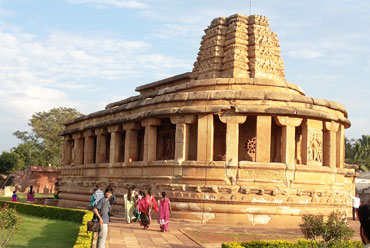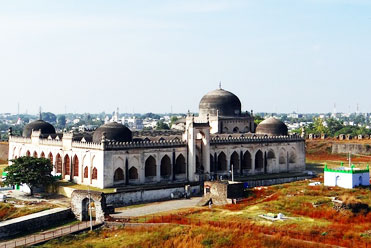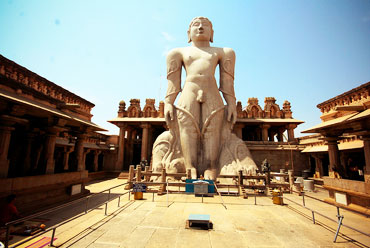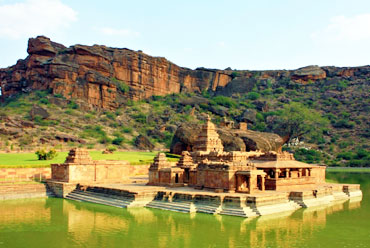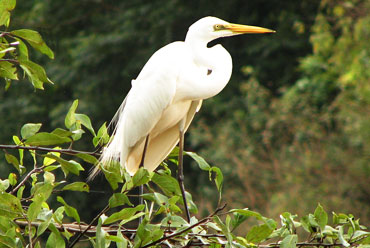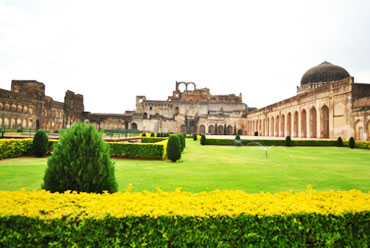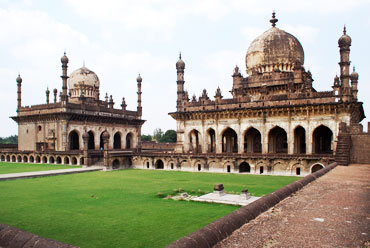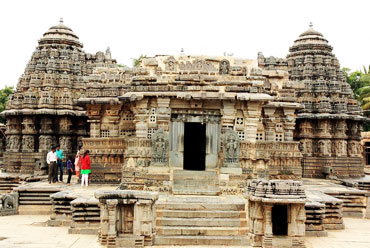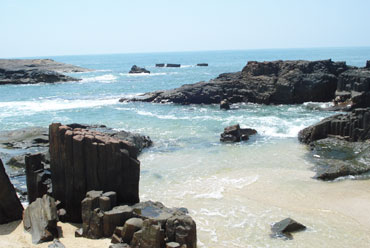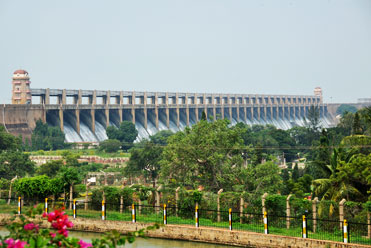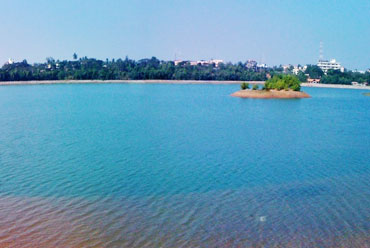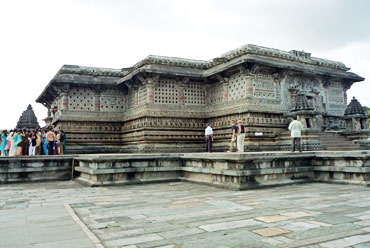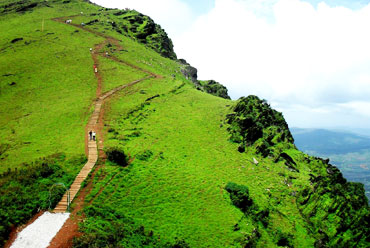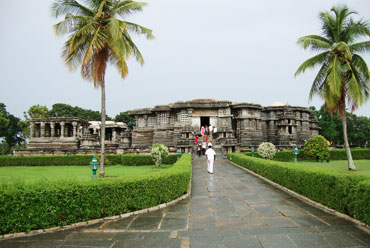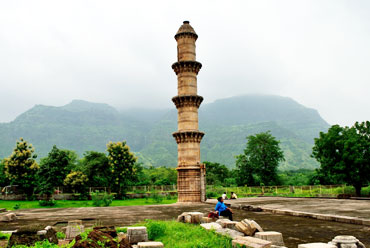Tourist Attractions in Srirangapatnam
The Srirangapatnam Fort, defended by a double wall, is the center of attraction here. It was built in 1454 by Thimmanna, a local chief and later renovated by Hyder Ali and Tipu Sultan. The river Kaveri skirts one side of the fort forming a natural moat, which is fed by water from the river.
The original bridge, which was the only link with the fort, is still in use. Near the bridge, one can still see the breach on the fort wall made by the British forces. The fort has four gates. Along the battlements, there are two dungeons in which prisoners of war were kept. Lalmahal, Tipu's residence within the fort, was razed to the ground and is now just a mound marked by a notice board. To view the military architecture, take a walk along the fort walls.
Outside the fort, across the main road, is a garden in the center of which stands Tipu's summer palace. The garden is called Darya Daulat Bagh (the garden of the wealth of the sea). The most interesting feature of this palace is the series of murals, which depict scenes from Tipu's military career, particularly the battle of Pollilur (near Kanchipuram) in which he crushed the British forces under Colonel Bailey. The kings who owed allegiance to Tipu are also featured in these paintings. This lavishly ornamented building now houses a museum of Tipu memorabilia.
Not far from this palace is a church distinctly European in style. The church was built by Abbe Dubois, the French missionary.
The tomb of Tipu Sultan lies next to his father at Gumad-e-Ala near the fort. The mausoleum is adorned with intricate stuccowork. The three doors made of ebony and inlaid with ivory were gifted by Lord Dalhousie.
Outside this monument, on the either side of the road leading to the river, stand two structures with typical Islamic domes on top. These are lofts for the birds made during the reign of Hyder Ali, as both Hyder and Tipu were keen on racing pigeons.
Monuments of the British are spread all over the island. On a high point opposite the summer palace is a tall pillar put up to honor the memory of British officers who died during the siege of Srirangapatnam. The garrison cemetery close by contains many interesting epitaphs to the British who died between 1800 and 1872. Near Tipu's tomb, by the roadside stands the grave of Colonel Bailey, an interesting combination of Saracenic and colonial architecture.
About three kilometers upstream, lies Ranganthittu Bird Sanctuary, a breeding ground for thousands of waterfowls during the period from June to November. The Kaveri River, which divides itself to form the island, rejoins on the western side. This spot is looked upon as sacred and prayers and pujas are held here regularly.
While the British forces had plundered the city after the final battle and destroyed Tipu's palace and fort, they left the religious structures intact. The temple of Shri Ranganatha is a blend of Hoysala and Vijayanagar architecture. This shrine attracts thousands of devotees. The Jain basdi, dedicated to Adinath, houses images of all the 24 tirthankaras. The Jama Masjid built by Tipu has two minarets that dominate the landscape for miles around.
The Karighatta Hill, which lies about five kilometers away, provides a complete view of the island. There is a small temple on top of this hill. Legend has it that it was on this hill that the British had placed their cannons during the siege of Srirangapatnam.
Places Around Srirangapatnam
Vrindavan Gardens and Krishnaraja Sagar Dam.
Built across the Kaveri River, Vrindavan Gardens and Krishnaraja Sagar Dam lie about 16 kilometers away from the town. The garden is illuminated on Saturdays and Sundays.
Somnathapur - About 32 kilometers from Srirangapatnam lies Somnathapur, a place well known for its elaborate carvings and miniature sculptures. A Hoysala temple dedicated to Lord Kesava is also located here.
Talakad, once the capital of the Ganga dynasty, lies 48 kilometers away from Srirangapatnam. Here you can find the temple of Vaideshwara located amidst sand dunes on the banks of River Kaveri.
Melkote - The temple town of Melkote lies about 35 kilometers from Srirangapatnam. The town is the center of Shri Vaishnava sect and was the headquarters of Vaishnava saint, Shri Ramanuja. The Sanskrit Academy is located here. The Melkote Wolf Sanctuary is just a kilometer away from the town.

